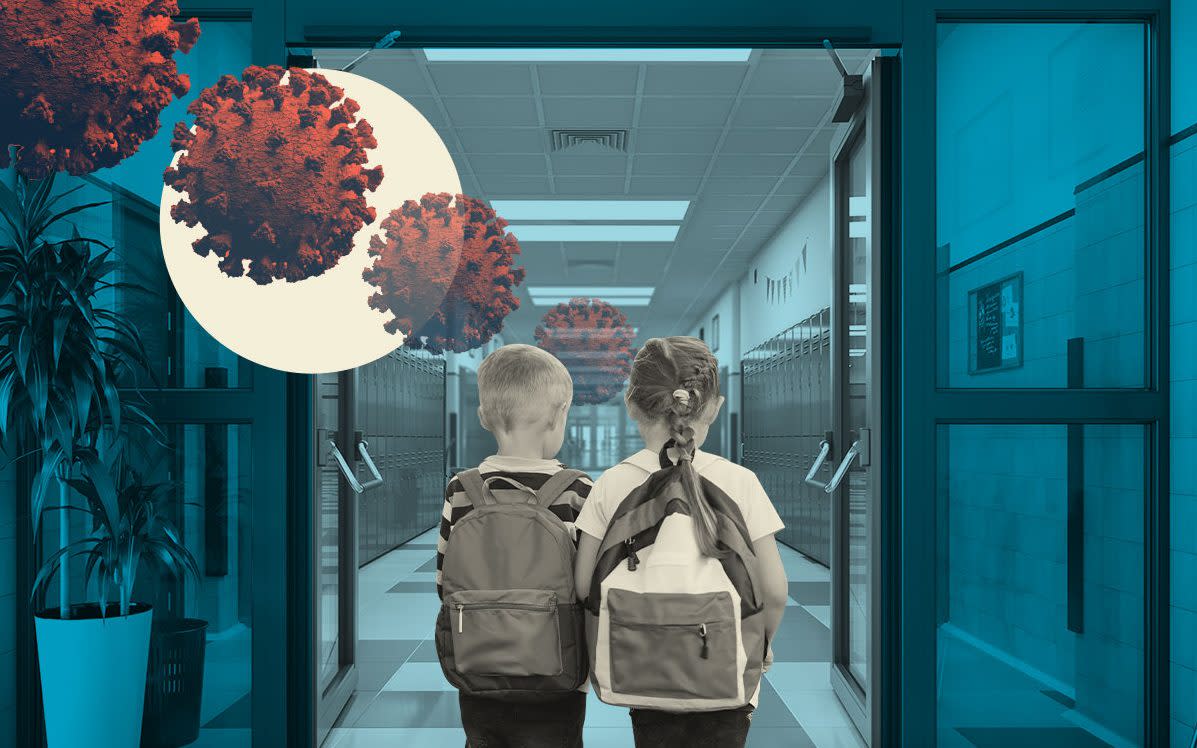Doomsday surge of Covid averted in schools – even without the disruptive bubble system

When Sajid Javid promised schools “a more normal year” ahead of the autumn term, he was roundly criticised by the teaching unions, who claimed it was “naive” to think Covid cases would not soar once pupils returned.
Yet more than two weeks have passed since classrooms opened their doors, and, even without the disruptive bubble system, we are yet to see the doomsday surge.
Latest figures for the first week of mass school and college testing show 17,710 pupils and staff tested positive in England on the first week back - between September 2 and 8 - accounting for about 11 per cent of the weekly cases announced by the Government.
However, the week before the widespread return, nearly 8,000 lateral flow tests came back positive from schools already open or staff preparing.
Crucially, in that week - from August 26 to September 2 - the percentage of lateral flow tests coming back positive was 0.7. But since the mass return, it has fallen to 0.4 per cent, suggesting much of the latest increase in cases is an artefact of increased testing.
Lateral flow testing rose from 1.09 million per week to 3.7 million when pupils returned in the first week of September.
So, although the return of children drove the slight rise in reported cases between the two weeks - from 150,027 to 158,322 - it was not responsible for the vast majority of reported cases.
Alasdair Munro, a paediatric registrar based at University Hospital Southampton, said on Twitter this week: “The effects of opening schools in England has certainly been less exciting than many had feared, despite much protestation.
“I suggest we take a moment to celebrate, and make a note to instill our children and young people with hope and reassurance rather than fear and blame.”
The University of Warwick has repeatedly found evidence that schools are not responsible for spreading Covid-19, with schools lagging cases in the community, suggesting infections are linked to growth in the wider environment.
More recent figures suggest cases in England are largely falling again, with just 125,499 cases recorded in the past seven days. Polymerase chain reaction (PCR) positivity rates have also decreased to 7.2 per cent of people testing positive, the lowest it has been since early July.
The Office for National Statistics (ONS) has also begun to show a fall in prevalence with an estimated 1 in 80 people now infected in the week ending September 11, compared to 1 in 70 the previous week.
An age breakdown shows that the percentage of children testing positive is only rising in seven- to 11-year-olds, with other youngsters seeing falls in prevalence.
In fact, even modellers now believe that England has reached a kind of stasis where, although infection rates are still high, they are not moving up.
Graham Medley, professor of infectious disease modelling at the London School of Hygiene & Tropical Medicine, is a member of Sage. He told journalists this week: “In England we have seen for the past five to four weeks an R number of 1.
“So we have had this relatively flat but quite high prevalence of infection without the need for any interventions.”
Scotland, which saw an alarming surge, starting before the schools went back, is now seeing cases falling without any interventions. While cases are still rising in Wales, they are falling in Northern Ireland.
The King’s College ZOE symptom tracker app, which usually runs ahead of other estimates, is also showing a fall in cases. Cases up to the week ending September 10 were nine per cent down on the previous week. The team estimates that Britain’s R value is now at 0.9.
Of course, it may still be too early to tell the full impact of schools, as infections can take a while to become apparent. But for now, parents can breathe easy in the knowledge that no alarming spike has emerged.

 Yahoo News
Yahoo News 
